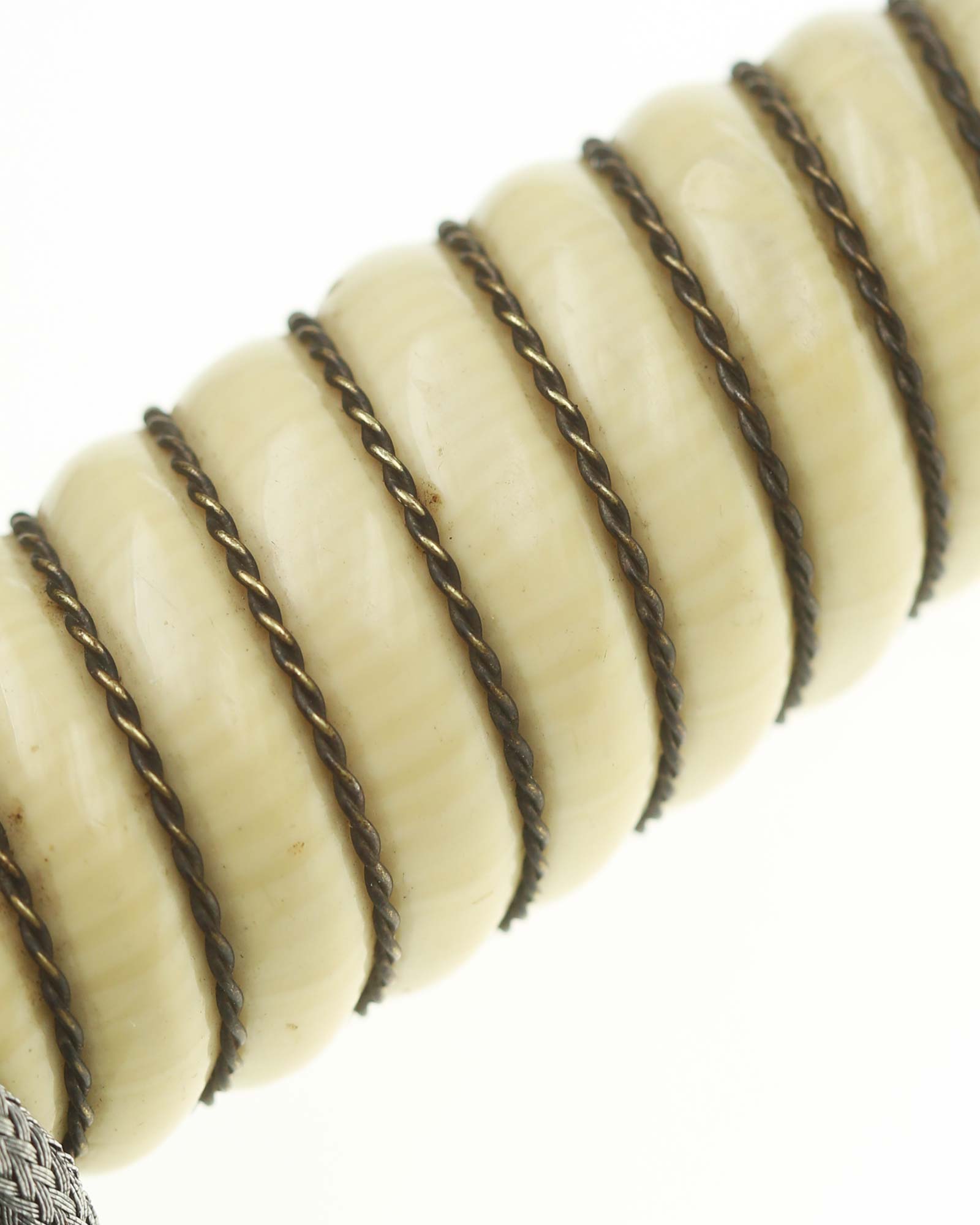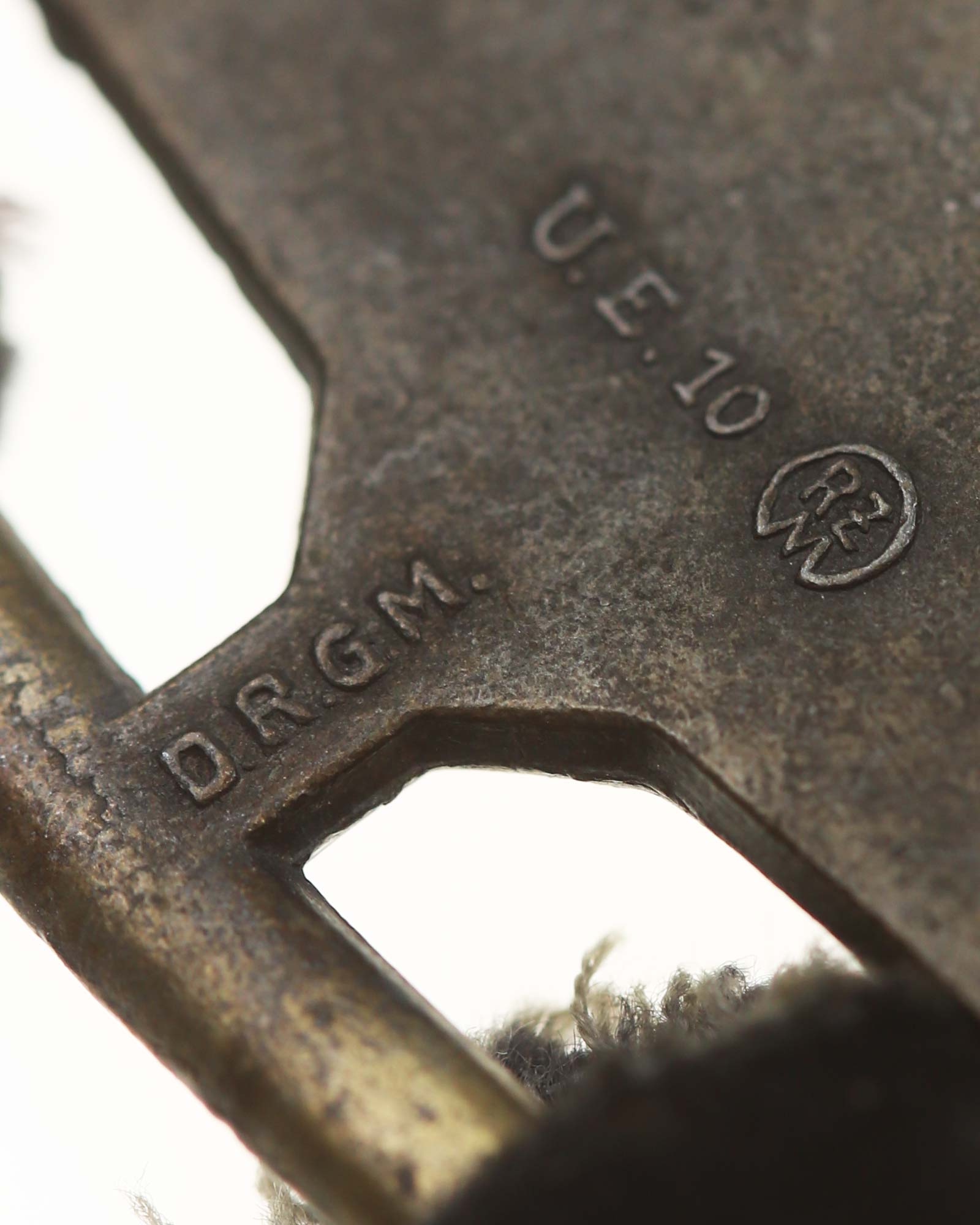Historical Background: Luftwaffe Officer’s Dagger (2nd Model, 1937)
The Luftwaffe Officer’s Dagger, 2nd Model, was officially introduced on July 19, 1937, replacing the first model aircrew dagger of 1934. Both patterns were worn concurrently until October 1937, when the new model became the exclusive dress weapon for Luftwaffe officers, cadets, and officials of officer rank. From March 1938 onward, non-commissioned officers with portepee were also authorized to wear it. Official wear was discontinued in December 1943.
The dagger’s elegant design, with its spherical sunwheel pommel and striking eagle crossguard, symbolized the prestige and authority of Luftwaffe personnel. Early examples were made of aluminum or nickel silver, later replaced by zinc alloys during wartime production.
Grips were typically produced from Trolon or celluloid-coated wood, issued in white or yellow. Over time, many developed a rich amber hue under exposure to light – a color highly prized among collectors today. The present example features such an amber grip, an uncommon and attractive variant. Period ivory and imitation ivory grips were also available, though extremely costly (an ivory grip alone cost 13.20 Reichsmarks, nearly the price of a complete dagger).
The steel scabbard exhibits a fine pebbled surface, with two oak-leaf–decorated suspension bands and closed carrying rings. The scabbard mouth was attached with one or two screws, depending on the manufacturer. Despite wartime material shortages, overall craftsmanship remained remarkably high.
The hanger consisted of blue-gray fabric straps with aluminum thread and rectangular buckles featuring oak-leaf reliefs. Deluxe hangers bear the dual marking “DRGM – RZM U.E.10”, identifying the manufacturer Wilhelm Deus, Solingen. This combination of Reichszeugmeisterei and industrial patent markings is rare and associated with early, high-quality production.
The portepee measured approximately 23 cm and was originally made of silver aluminum wire, later of artificial silk coated with cellophane. Although regulations prescribed a specific wrapping method, period photographs show numerous personal variations in how airmen tied it to their grips.
The Luftwaffe dagger remains an iconic symbol of the Third Reich’s air arm. It embodied both the aesthetic ideals and the meticulous Solingen craftsmanship of the late 1930s. Examples like this, retaining their hanger, portepee, and especially the rare amber grip, rank among the most desirable artifacts in the field of edged weapon collecting.




![© DGDE GmbH - Luftwaffe Dagger [1937] with Hangers and Knot © DGDE GmbH - Luftwaffe Dagger [1937] with Hangers and Knot](https://www.dg.de/media/images/product/info2/luftwaffen-offiziersdolch-dagger-1937-3914-1.jpg)
![Luftwaffe Dagger [M1937] with Hangers and Knot by Alcoso ACS Solingen](https://www.dg.de/media/images/product/thumb/luftwaffen-offiziersdolch-1937-dagger-alcoso-acs-solingen-3915-1.jpg)




 Exclusive offers 10 € voucher when you sign up to our newsletter.
Exclusive offers 10 € voucher when you sign up to our newsletter.








